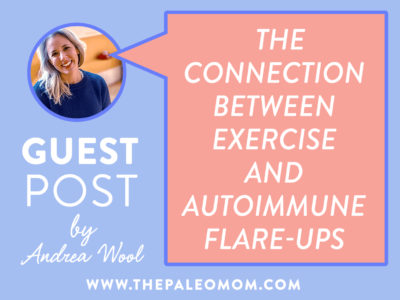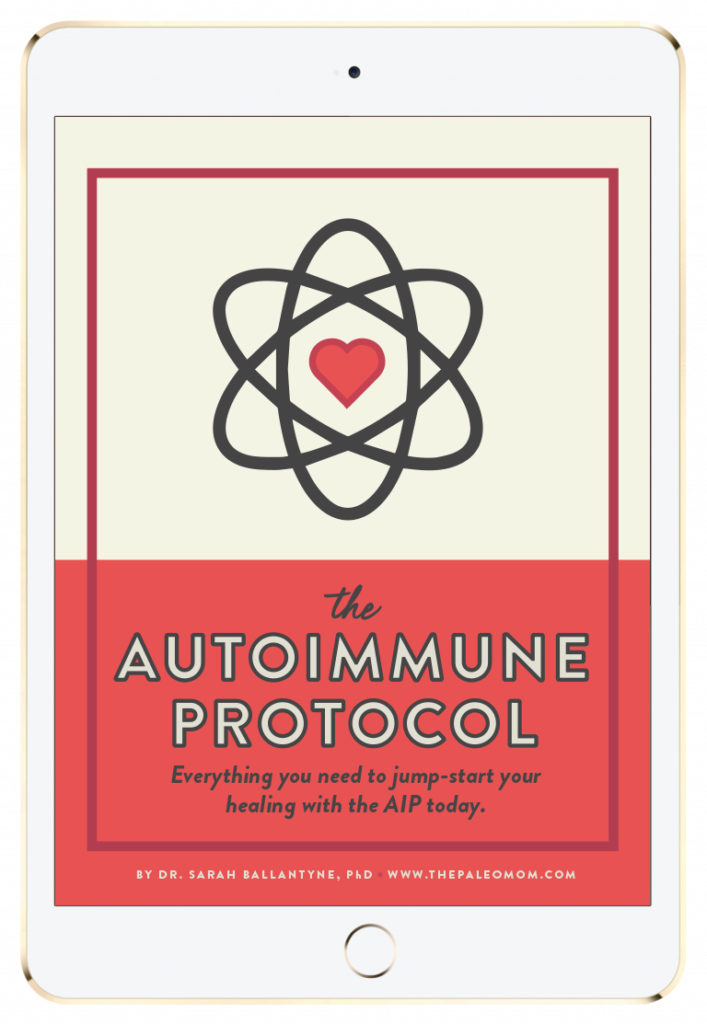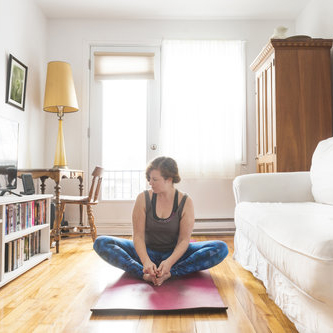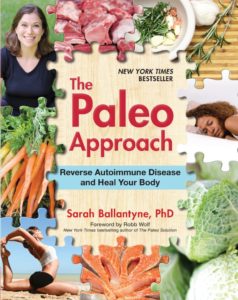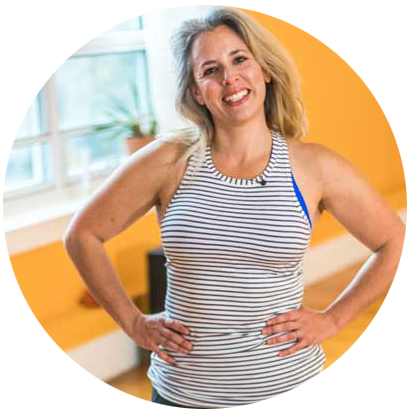 How To Use Exercise To Heal You, Not Hurt You.
How To Use Exercise To Heal You, Not Hurt You.
Hi there, I am Andrea, the founder of Autoimmune Strong, and I want to tell you a little story.
Table of Contents[Hide][Show]
- How To Use Exercise To Heal You, Not Hurt You.
- What Is an Exercise-Induced Symptom Flare-Up?
- Should I Stop Exercising to Prevent Exercise-Induced Symptom Flare-Ups?
- What is The Right Kind of Exercise for People with Autoimmune and Chronic Pain Conditions?
- What if I am Overwhelmed and Don’t Know Where to Start?
You see, when I was diagnosed with an autoimmune disorder (actually, I have two hashimotos, celiac, and also fibromyalgia) my doctor told me to go exercise. He said that exercise was good for me, and it would help me feel healthier and manage my autoimmune symptoms.
And this is true. Many studies have been done that demonstrate the positive effects of exercise on people living with an autoimmune disease. Some of these positive effects include increased energy, reduced fatigue, reduced anxiety and depression, improvement in sleep quality, and an overall reduction in pain.
HOWEVER. Every time I started an exercise routine, it went like this. I would go to the gym, do some cardio and some weights, or take a class, and I would come home feeling great. I would go back the next day, and the next day after that and then Boom! I would wake up feeling awful, and I would realize I was having a symptom flare-up. My body would then require an intense bout of rest to recover from this flare, which would sometimes last for weeks. When I finally would feel better, I would say to myself- “Ok, time to go back to the gym”. And the cycle would start all over again.
It took me forever to make the important connection that my gym habits that were causing my flare-ups. I was experiencing an exercise-induced symptom flare-up, and I had no idea.
I want to share my story to help build awareness around this issue. I am not the only one who struggles with exercise-induced symptom flare-ups. In fact, anyone living with an autoimmune disorder and/or chronic illness like Lyme disease or fibromyalgia is susceptible to an exercise-induced symptom flare-up, no matter how much they exercise or how strong they are.
Here is some important information for you to know about exercise-induced symptom flare-ups, so you can make educated decisions about how to exercise safely for your body.
What Is an Exercise-Induced Symptom Flare-Up?
Most simply put, it is a symptom flare-up of the disease that is caused by exercise. But let’s break that down a bit.
People who live with an autoimmune disease and other chronic illness are intimately connected with the concept of a flare-up. We have all been there, right? When you have been feeling ok, and then all of a sudden you feel awful? That awful feeling is a flare-up.
Flare-ups look a little different for each person, depending on the individual disease (for example, a Crohn’s flare-up has some symptoms that are different from a Hashimotos flare-up) but generally, they look like this: exhaustion, muscle aches, painful body that is tender to the touch, lack of ability to function normally, along with heightened anxiety, depression and/or sadness.
Flare-ups can be caused by a wide variety of factors that can range from the change in seasons to eating certain foods. Basically, anything that puts stress on the body can cause a symptom flare-up. Stress has been well documented as a trigger of an autoimmune disease symptom flare-up. And while there is a growing amount of research linking exercise directly to the experience of an autoimmune flare, the connection is obvious.
Save 70% Off the AIP Lecture Series!
Learn everything you need to know about the Autoimmune Protocol to regain your health!
I am loving this AIP course and all the information I am receiving. The amount of work you have put into this is amazing and greatly, GREATLY, appreciated. Thank you so much. Taking this course gives me the knowledge I need to understand why my body is doing what it is doing and reinforces my determination to continue along this dietary path to heal it. Invaluable!
Carmen Maier
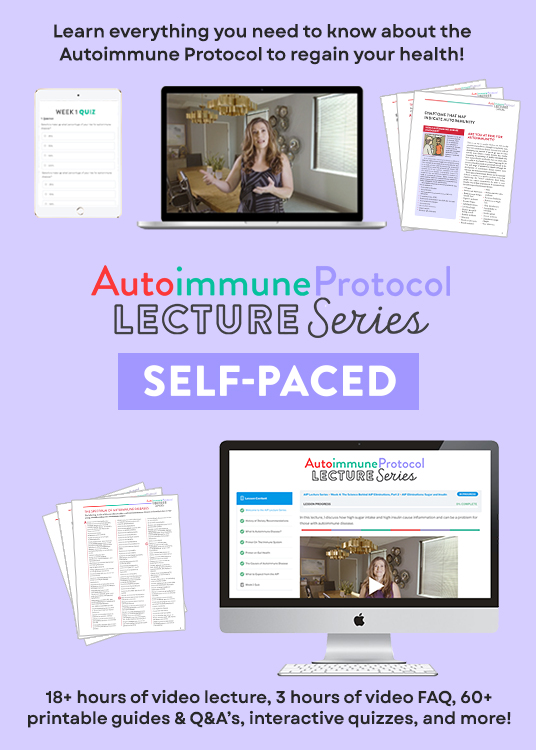
Exercise IS stress on the body. That is the goal of exercise- to put the body under stress, so the body can adapt to the stress. In this adaptation, change happens- our muscles get stronger, our heart and lungs work more easily and efficiently, our body is better able to regulate hormones, and on and on. All of these adaptations are wonderful- these are the things our doctors want us to experience, to increase our healthfulness.
However, to get these benefits of exercise, we have to actually perform an exercise, which causes a temporary increase in cortisol in our system. And for people with autoimmune conditions, that increase in cortisol (otherwise known as our stress hormone) can be too much for our system to handle. As I said before, stress (otherwise known as cortisol increases) can trigger autoimmune symptoms. This is how exercise-induced symptom flare-ups happen.
Should I Stop Exercising to Prevent Exercise-Induced Symptom Flare-Ups?
No! Absolutely not. As my doctor said, exercise is beneficial for those of us living with an autoimmune disease. If done properly, not only can exercise provide long-term overall health benefits, but it can also help us manage our specific autoimmune symptoms and flare-ups. Chronic pain and autoimmune conditions are exacerbated by inflammation, and, if done properly, exercise can help to reduce inflammation and pain caused by inflammation.
Additionally, the right exercises can teach our bodies to adapt to a pain response, which can help us get through the pain and exhaustion of our daily activities. Our bodies need to learn to be comfortable being uncomfortable in a safe, protected way so that when we are exposed to discomfort in our daily lives, our bodies are prepared to handle it.
So definitely do not stop exercising. In fact, if you stop exercising, your physical aches and pains will actually increase over time. The goal here is to exercise daily, doing the right kind of exercise, to help your body reduce the pain experience and increase healthfulness.
What is The Right Kind of Exercise for People with Autoimmune and Chronic Pain Conditions?
The idea of a right kind of exercise for people living with an autoimmune disease is a little misleading. The goal here is to reap the health benefits of exercise in terms of managing your autoimmune disease and symptoms while dialing in the following factors to avoid exercise-induced symptom flare-ups. Almost any exercise program can be tailored to be the right kind of exercise. There are four factors to keep in mind when determining the right kind of exercise.
What if I am Overwhelmed and Don’t Know Where to Start?
Remember, you just need to exercise in a way that is proper for your body. You need to exercise in a way that puts enough pressure on your body to create the need for adaptation, without stimulating a cortisol increase within your system. But if this feels overwhelming to you and you don’t know where to start, don’t worry! I have designed an exercise program just for you.
Autoimmune Strong is an online exercise video series that is designed to help you get stronger without causing an exercise-induced symptom flare-up.
Using 15-minute exercises that are easy to do at home, Autoimmune Strong provides a combination of strength, flexibility and mobility routines that will help your body gain strength, reduce pain, and increase energy- all while keeping you safe from exercise-induced flare-ups.
All the videos are taught by me- a certified personal trainer with an expertise in autoimmune and chronic pain exercise. And I live with chronic pain too- so I know firsthand how you feel and how you need to move. In fact, this is the program I designed for myself, to start on my journey back to strength.
There are two types of videos in this program- instructional and workouts. The instructional videos teach you how to do the moves, and the workout videos tie it all together in a routine you can practice every day.The exercises provided a start at a very low intensity, and build up over time, giving your body time to adapt and progress in a safe way.
And if you love this idea, but feel you need a little extra motivation and accountability, there is a new program just for you! The Autoimmune Strong small group coaching begins April 28th. (And hurry! Early bird pricing offer ends soon!)
To learn more about the Autoimmune Strong program and the small group coaching options, check out the website at www.getautoimmunestrong.com. Sign up now to get a free 7 day trial of the entire program, so you can be sure it’s right for you!

